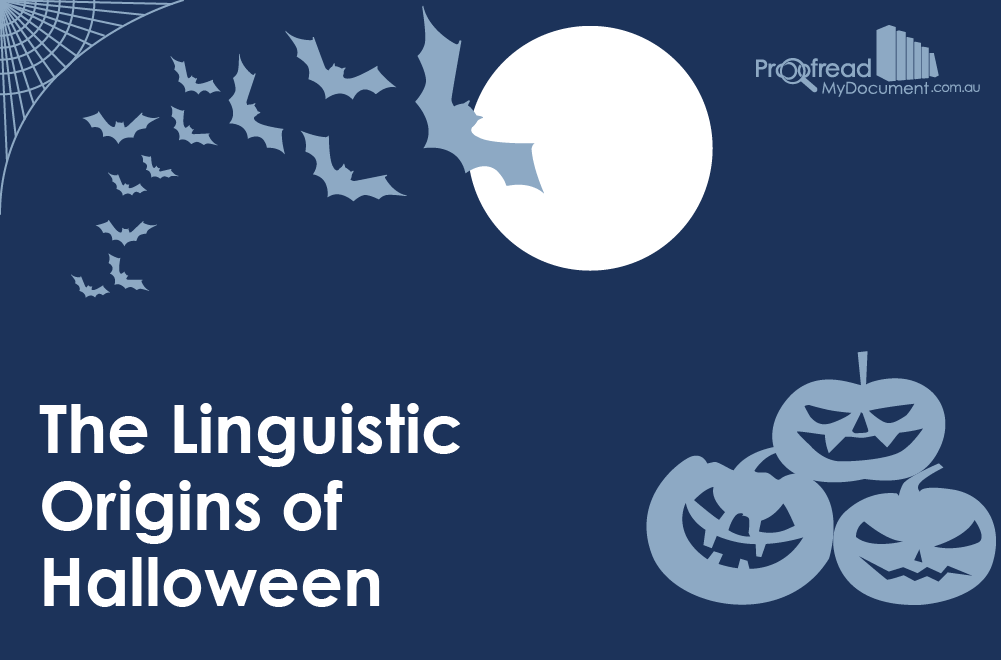Boo! Did we scare you? It’s Halloween soon, so we thought we’d give it a try. Being the word nerds that we are, though, we’re more interested in language than frightening people. As such, we’ve been investigating the linguistic origins of Halloween…
Halloween (aka All Hallows’ Evening)
Although commonly spelled without an apostrophe, you might have seen Halloween written as ‘Hallowe’en’ before now. This is because ‘Halloween’ is actually a contraction of ‘All Hallows’ Evening’, the night before All Saints’ Day (a Catholic feast day).
But how do you get from ‘All Hallows’ Evening’ to ‘Halloween’? Easy. ‘Allhallows’ is an Old English term for ‘the feast of the saints’, and ‘even’ is an old Scottish spelling of ‘evening’.
That leaves you with ‘Allhallows-even’, which was eventually shortened to ‘Hallow-e’en’ and popularised by a Robert Burns poem. You can tell the word was relatively new at the time, as Burns left a footnote explaining what it meant:
[Halloween] Is thought to be a night when witches, devils, and other mischief-making beings are abroad on their baneful midnight errands; particularly those aerial people, the fairies, are said on that night to hold a grand anniversary.
Sounds fun. You can see why it caught on.
Trick-or-Treat
The term ‘trick-or-treat’ is pretty self-explanatory on one level: on Halloween, children are dressed up in costumes and sent door-to-door, soliciting sweets (the ‘treat’) from strangers by threatening to ‘trick’ them if they don’t give in to their demands.
Find this useful?
Subscribe to our newsletter and get writing tips from our editors straight to your inbox.
(Photo: george ruiz/flickr)
What you might not realise is that the modern version of trick-or-treating has its origins in the medieval European tradition of ‘souling’, wherein children would dress up and go door-to-door begging for food or money in exchange for prayers and songs.
Jack-o’-Lantern
The sight of a grinning face carved into a pumpkin is a familiar part of Halloween, but who exactly is this ‘Jack’ and why do we carve lanterns on Halloween?
Halloween is the one time of year when pumpkins get to display their emotional range.For an entertaining explanation, we turn to an old Irish legend about a man called ‘Stingy Jack’. Jack first tricked the devil into turning himself into a coin, then later duped him into getting stuck up a tree, only letting him down when he agreed not to claim Jack’s soul.
Jack’s trickery saved him from the devil, but God wasn’t very impressed and refused to let Jack into heaven when he died. Instead, the devil gave Jack a burning coal. Jack then carved a lantern out of a turnip (originally used for jack-o’-lanterns, until pumpkins came along) and used the coal to light his way as his lost soul wandered the world.
(Photo: Bodrugan/wikimedia)
Eventually, people started imitating ‘Jack-o’-the-Lantern’ by carving their own turnip lights to ward away spirits during Samhain (a precursor to Halloween), and thus a holiday tradition was born!
